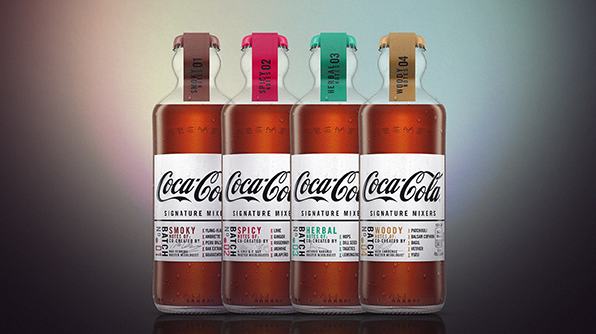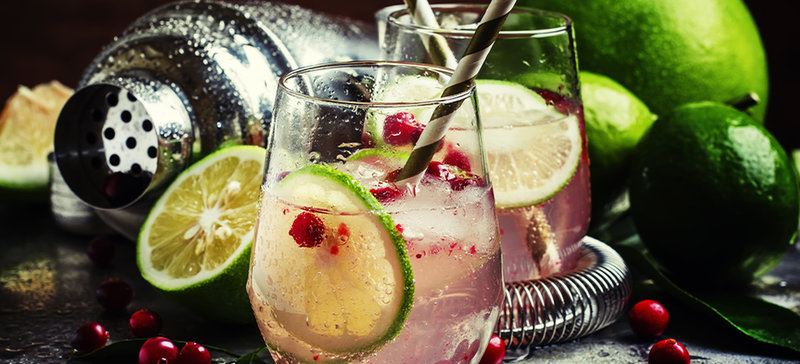There’s room for improvement in soft drinks
Taking a closer look at the numbers in the UK, Fentimans, which produces both mixers and premium soft drinks, says in its 2019 Market Report that the total value of premium mixers sales "rocketed by 81.3% to £323.1m ($397.1m) in the 12 months to April 2019". The growth, the company says, reflects the boom in high-end drinking.
Away from mixers, Fentimans reports that the total flavoured carbonates segment of the premium market also enjoyed growth, but at a much less impressive rate - up 5.6% to £47.1m, while lemonade sales were up 6.1% to £36.5m.
According to on-premise research specialists CGA, there is a lot of room for improvement. As part of the Fentimans report, CGA's Business Leaders' Survey reveals that only 14% of on-premise operators rate their soft drinks ranges as "market-leading".
Acquired brands just become brand families that serve the purpose of filling shelves
Taking a closer look at the numbers in the UK, Fentimans, which produces both mixers and premium soft drinks, says in its 2019 Market Report that the total value of premium mixers sales "rocketed by 81.3% to £323.1m ($397.1m) in the 12 months to April 2019". The growth, the company says, reflects the boom in high-end drinking.
Away from mixers, Fentimans reports that the total flavoured carbonates segment of the premium market also enjoyed growth, but at a much less impressive rate - up 5.6% to £47.1m, while lemonade sales were up 6.1% to £36.5m.
According to on-premise research specialists CGA, there is a lot of room for improvement. As part of the Fentimans report, CGA's Business Leaders' Survey reveals that only 14% of on-premise operators rate their soft drinks ranges as "market-leading".

The Coca-Cola Co's Signature Mixers range launched in the UK in June 2019.
Premium propositions
How can the non-mixers segment of the soft drinks category make more of premiumisation? When it comes to innovation, Britvic points to some familiar trends. The London Essence Co owner flags niche, crafted soft drink innovations with strong authenticity and provenance cues, calling them ‘key elements to perceptions of super premium status’.
The company also makes a good point about 'safer' trial options for less adventurous consumers. According to Britvic, more middle-tier premium soft drinks products and innovations with less niche flavour profiles have proved important in trading people up because they act as a safer trial option.
To create a more premium drinking experience, Britivc suggests serves and cues that replicate an alcohol consumption experience.
"In 2018 it was the middle tier of soft drinks that delivered the majority of the premium growth in foodservice and, in licensed, there was higher premium share gain in super-premium soft drinks," Britvic's report says.
Experience also plays a part in the effort to upgrade value. "Elevated serve is a vital tool in delivering drink experience, satisfaction and perceptions of value for money," Britvic explains. To create a more premium drinking experience, Britivc suggests serves and cues that replicate an alcohol consumption experience, such as building drinks on the bar, in front of customers and using interesting garnishes.
Social media also plays a part in the 21st-Century drinking experience, adds Fentimans. "Creating Instagrammable drinking experiences is a trend that both brands and operators can use to better engage with consumers," Fentimans says. "Making sure offerings are frequently changed also drives engagement as it satiates the constant thirst for new online content."

Building soft drinks at the bar with interesting garnishes can improve their premium feel by replicating the experience of alcohol consumption.
Health and wellness is, of course, an important factor and premium soft drinks producers should consider transparent communication of ingredients, production methods and nutritional information, the Fentimans report says.
Though authenticity, health & wellness and experience are significant, the new, discerning premium soft drinks consumer considers flavour to be king, Fentimans believes. They expect "differentiated flavour experiences and premium quality options above and beyond ordinary carbonated drinks".
The company suggests that the future holds flavour influence from (among other places) Asia, Japan in particular, since the country is hosting both the 2019 Rugby World Cup and the 2020 Olympics.
As the gin boom moves to new markets, the thirst for premium mixers follows. And, as trends towards both abstinence and premiumisation continue, this new discerning premium soft drinks consumer could soon be applying the 'drink less, but better' phrase to the once-humble soft drink.